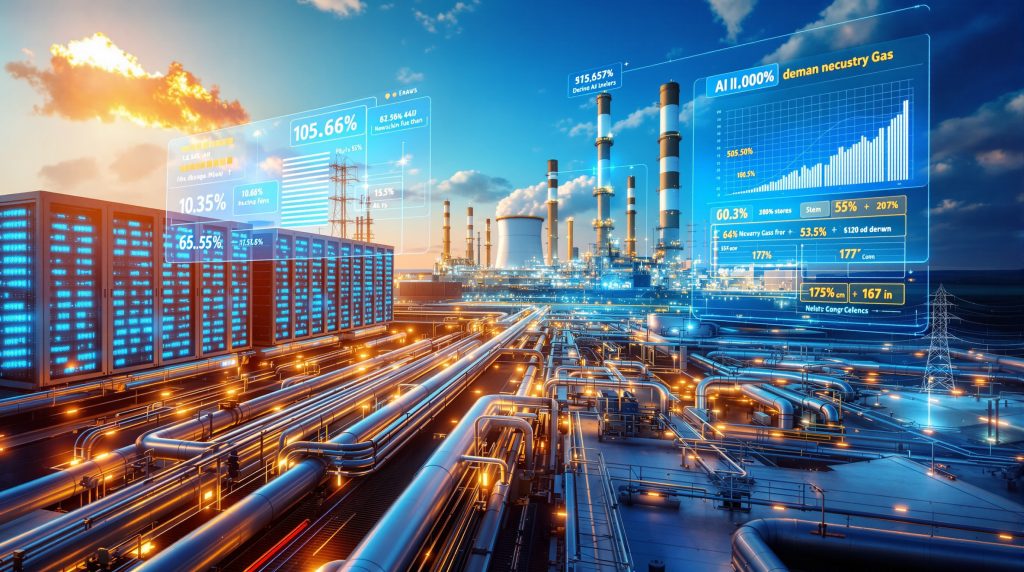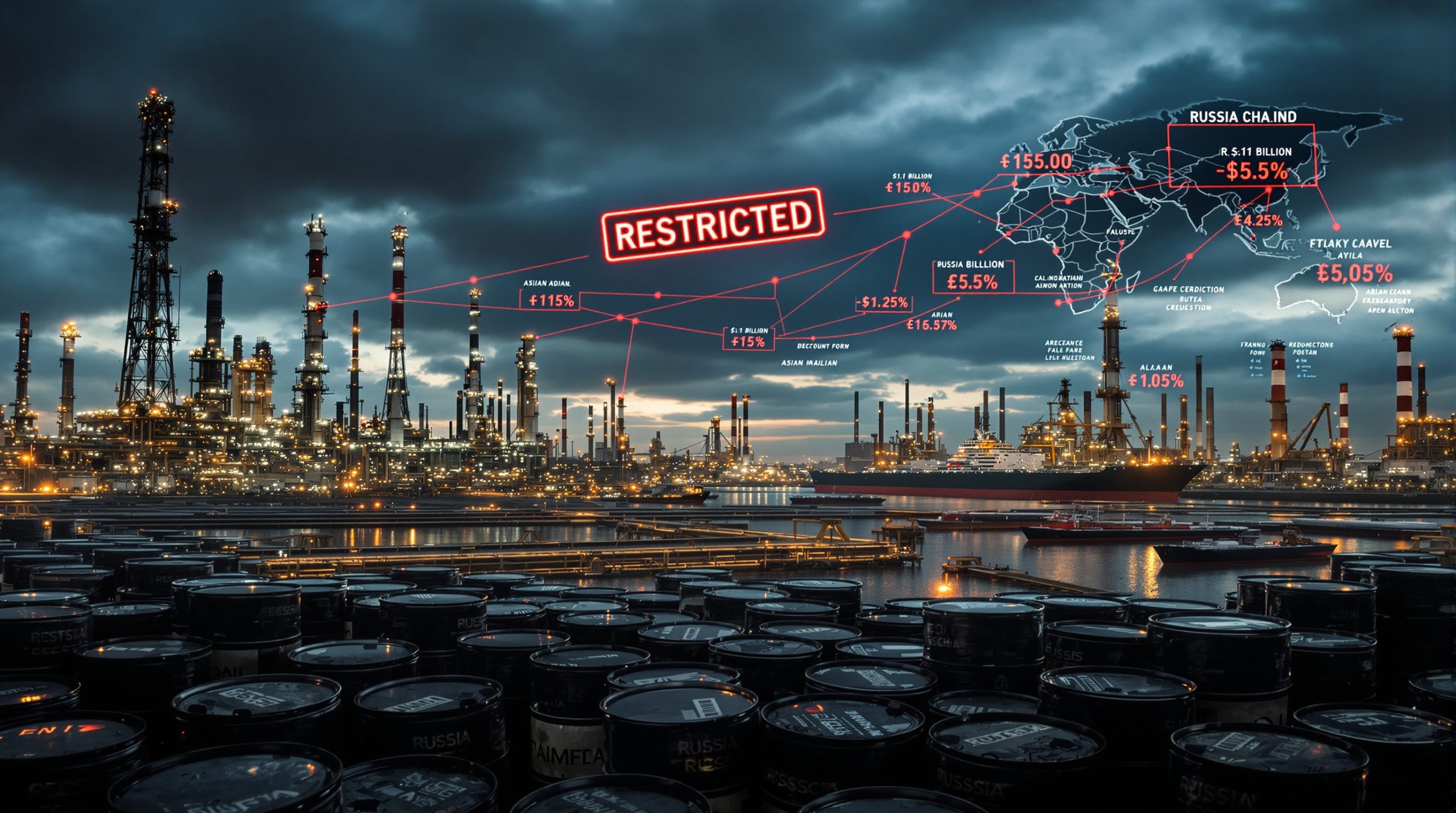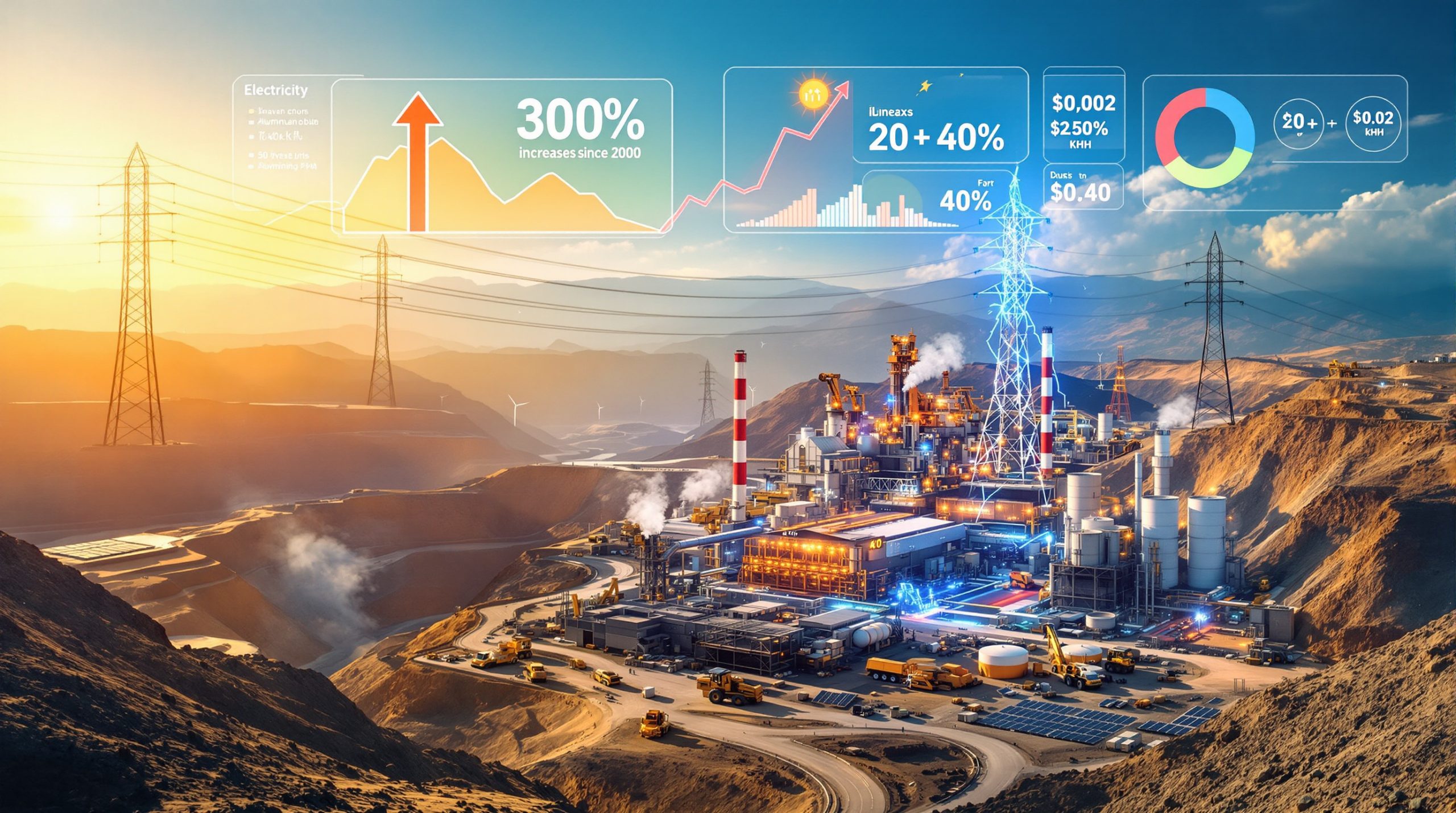Understanding the AI-Natural Gas Connection
The rapid expansion of artificial intelligence is transforming global energy demand profiles in ways not seen since the digital revolution began. Natural gas AI demand has emerged as a critical factor in energy planning, driven by electricity-hungry data centers that require continuous, reliable power to fuel these technological hubs. This unprecedented shift is reshaping how utilities approach grid stability and energy sourcing.
Why Data Centers Require Massive Energy Resources
AI's most advanced computations, especially for machine learning and large language models, consume significantly more electricity than traditional computing activities. This heightened energy requirement means modern data centers require an uninterrupted 24/7 power flow. Unplanned outages could compromise millions of calculations, leading to errors or shutdowns in mission-critical applications like autonomous vehicles, cloud services, or financial platforms.
These high-stakes demands have shifted utilities' priorities:
- Energy scalability: As AI systems scale, so must data center capacity
- Grid stability: Computer-driven operations cannot risk power fluctuations
- Fuel flexibility: The energy source must adjust instantly to sharp increases or sudden drops in demand
Natural Gas as the Primary Grid Stabiliser
Natural gas occupies a unique position among energy sources. It delivers on-demand, dispatchable power, activating or ramping down as system loads change. Unlike wind and solar, which are subject to weather variability, gas-fired power plants provide reliable and predictable electricity output.
Turbines powered by natural gas can ramp up to full capacity in 10-15 minutes, matching the dynamic needs of AI-driven facilities. With renewables offering an intermittent solution and nuclear remaining costly and slow to deploy, the relationship between power generation and AI drilling innovations has become central to the evolving energy economy.
How Much Energy Does AI Actually Consume?
As AI scales, its global energy footprint is drawing increasing attention from both policymakers and investors. The trajectory is clear: AI workloads are exponentially increasing total data center electricity requirements.
Current AI Energy Consumption Metrics
Analysing the current energy costs of AI reveals staggering consumption patterns:
| Computing Type | Estimated Energy per Query | Annual Growth Trend | Grid Impact |
|---|---|---|---|
| Traditional Search | 0.3 Wh* | 3-5% | Minimal |
| AI-Powered Search | 2-3 Wh* | ~25-40% | Significant |
| Large Language Models | 15-30 Wh* | ~50-80% | Critical |
| AI Training Operations | 1,000+ kWh per session* | ≥100% | Grid-altering |
Estimates based on various industry and academic analyses from the IEA, MIT Technology Review, and IEEE Spectrum.
Projected Energy Demand Through 2030
The International Energy Agency projects that electricity use from global data centers could double between 2022 and 2026. In North America, utility forecasts for regions with the most AI development suggest that AI alone could fuel over 20-30% electricity demand growth in key markets by 2030.
Fast-growing demand for large language models and deep learning applications is accelerating peak load requirements. This trend is stretching grid operators' flexibility and pushing utilities toward robust infrastructure investments focused on natural gas.
"The unprecedented speed of demand acceleration is straining traditional grid planning, with projected energy usage often underestimated as new, larger data centers come online or expand their operations."
What Role Does Natural Gas Play in Meeting AI Energy Demands?
As the backbone for scalable, on-demand energy, natural gas is integral to the energy mix for future-proofing AI infrastructure. The natural gas AI demand relationship has become increasingly symbiotic as tech companies seek reliable power sources.
Infrastructure Expansion Plans
According to the U.S. Energy Information Administration and state-level interconnection filings, dozens of new natural gas power plants are under planning or construction across the country. Several states—Texas, Pennsylvania, and Louisiana among them—are allocating billions in utility capital investments toward new or expanded gas-fired generation.
- Planned capacity additions among these projects exceed 20 GW by the late 2020s in select regions
- This constitutes the largest single-decade buildout of fossil capacity since the pre-shale boom era
Grid Reliability Requirements
Natural gas turbines are chosen over other forms of generation based on multiple attributes:
- Fast startup: Capable of coming online within 10-15 minutes, ensuring rapid response to fluctuating digital demand
- Consistent output: Delivers stable, weather-independent power output, critical for data-hungry AI operations
- Integration readiness: Easily links to existing electrical transmission and distribution infrastructure
- Flexible scalability: Plants can incrementally ramp output to match near real-time system requirements
Which Regions Are Experiencing the Highest Natural Gas Demand Growth?
The landscape of AI-driven power demand is not evenly distributed. Some regions are quickly establishing themselves as global AI development hubs, particularly those with favourable Alaska drilling policy frameworks that support energy infrastructure development.
North American AI Hub Development
Recent utility and industry disclosures indicate significant regional concentration:
- Texas: Major hubs around Dallas-Fort Worth, Houston, and West Texas are expected to host multi-gigawatt-scale data centers
- Pennsylvania: Expansion is concentrated near the Marcellus Shale, leveraging immense pipeline connectivity
- Louisiana: Tapping the Haynesville Shale, this region is attracting LNG export facilities alongside data infrastructure projects
The convergence of natural gas availability, pipeline infrastructure, and pro-investment policies is accelerating data center site selection in these markets.
International AI Infrastructure Competition
China is driving massive LNG imports despite coal and nuclear buildout, as surging AI computation demand necessitates additional gas turbine deployment. Chinese data centers, often employing less energy-efficient chips, compensate with higher overall grid volume.
Europe faces unique challenges as urban data centers in the EU encounter expansion hurdles due to stricter permitting, grid congestion, and limits on new natural gas infrastructure. These limitations could slow Europe's relative share of AI-driven economic growth.
How Is AI Technology Improving Natural Gas Production Efficiency?
While AI creates new power demand, it's also making natural gas supply chains and production operations more resilient and efficient. This creates a feedback loop where natural gas AI demand simultaneously drives technological advancement in the sector.
Seismic Data Analysis Enhancement
Machine learning algorithms now aid in geological modelling, increasing the success rate of natural gas deposit identification. By interpreting seismic and subsurface data more accurately, exploration teams can prioritise high-probability drilling targets, reducing both environmental impact and dry-hole expenditures.
Production Optimisation Applications
Key AI applications in natural gas operations include:
- Predictive maintenance lowers equipment downtime by rapidly flagging components at risk of failure
- Automated leak detection uses AI sensors to immediately pinpoint gas leaks, improving safety and compliance
- Pipeline routing optimisation leverages advanced analytics to minimise construction expenses
- Real-time production monitoring allows dynamic adjustment of well output for maximum extraction efficiency
- Demand forecasting improves supply chain readiness and power market positioning
The cumulative effect of these innovations is a reduction in operating costs and increased throughput, amplifying the investment value proposition of natural gas assets in the AI era.
What Are the Investment Implications of AI-Driven Natural Gas Demand?
The evolving relationship between natural gas and AI offers uncharted opportunities—and risks—for investors across the energy value chain. Understanding these dynamics is crucial for developing effective investment strategy insights.
Natural Gas Producer Opportunities
Companies with substantial, low-cost gas reserves and direct pipeline access stand to benefit first from heightened utilisation and pricing power. Small- and mid-cap producers with lean operational models could see outsised earnings multiples during periods of regional supply tightness.
Furthermore, disparities in market sentiment are evident: Large-caps are often valued as if $5 natural gas is already here, whilst smaller peers are sometimes priced for lingering sub-$3 markets—this wide gap creates strategic buying opportunities.
Infrastructure Investment Requirements
The scale of required infrastructure investment is unprecedented:
- Gas turbine manufacturing: Recent constraints in turbine supply have forced manufacturers to ramp up production
- Pipeline expansion: Large-scale network improvements will need thousands of miles in new transmission lines
- Storage facilities: The need for seasonal and peak-use gas storage grows alongside data center baseload requirements
- Grid upgrades: Utilities must modernise substations, lines, and switching equipment to handle high-load infrastructure
These combined capital requirements represent one of the most significant infrastructure investment cycles since the post-2000 digital buildout.
How Do Natural Gas Prices Respond to AI Demand Growth?
Natural gas markets respond dynamically to surges in AI-driven demand, but price action continues to be shaped by both structural and seasonal forces. The US natural gas outlook reflects this complex interplay of traditional and emerging demand drivers.
Current Market Dynamics
In recent quarters, impressive growth in forward demand from AI data centers has bumped up the long-end of the natural gas forward curve. However, spot prices have sometimes remained subdued, influenced by seasonal fluctuations and mild weather.
For instance, in late 2024, U.S. Henry Hub spot prices hovered around $3 per million Btu, despite robust forward demand—a divergence reflective of both short-term supply abundance and near-term weather trends.
Price Volatility Factors
Several key factors influence pricing dynamics:
- Seasonality: Unexpectedly warm or cool months rapidly shift demand for heating or cooling
- Long-term contracts: Many newly-built AI facilities pursue multi-decade fixed supply agreements
- Market psychology: Divergence between large- and small-cap natural gas company valuations reflects investor skepticism
These factors combine with the structural undercurrents of AI growth to produce a market where long-term bullishness is often tempered by short-run price lulls.
What Challenges Could Limit Natural Gas Supply for AI Applications?
AI's breakneck expansion faces several supply-side bottlenecks that could restrict the pace or affordability of data center deployment. These constraints may also influence broader tariff impact insights as global energy trade patterns shift.
Infrastructure Bottlenecks
Key supply constraints include:
- Gas turbine manufacturing delays: Recent surges in demand outpaced supply, leading to longer project lead times
- Labour shortages: Skilled trades required for construction and maintenance are increasingly scarce
- Permitting complexities: New gas infrastructure faces lengthier approval cycles in many jurisdictions
- Regulatory uncertainty: Heightened scrutiny from environmental agencies creates unpredictable delays
Consequently, some utilities have reverted to older, less efficient generation technology to avoid delays from new equipment lead times.
Environmental and Regulatory Considerations
While the AI boom incentivises rapid infrastructure growth, policymakers must balance these priorities with emission-reduction targets. In several U.S. states and the European Union, restrictions on new natural gas permits or carbon pricing mechanisms may slow or redirect investment.
Companies combating permitting stalemates are devoting significant resources to community engagement, environmental mitigation, and innovation in emissions management.
How Sustainable Is Natural Gas Demand from AI Growth?
The pace and durability of AI-driven natural gas AI demand are subjects of debate, with scenarios ranging from sustained expansion to more tempered growth as technology matures.
Technology Evolution Scenarios
AI efficiency improvements through ongoing advancements in chip design, cooling, and workload management may moderate electricity-per-unit-computation. However, consensus among data center operators is that demand growth currently outstrips efficiency gains.
Quantum computing represents a technological leap that could dramatically cut energy requirements for some future AI workloads. Nevertheless, commercial relevance is likely still years away.
For the immediate future, trends suggest energy intensity will keep pace with, or exceed, ongoing hardware and software optimisations.
Alternative Energy Integration
Renewable energy projects will supplement but not replace gas-fired generation for AI reliability needs in the near to mid-term. Hybrid systems, where renewables are paired with flexible natural gas backup, are increasingly installed to offer both environmental and reliability benefits.
According to Big Tech's energy strategies, major technology companies are actively seeking solutions that combine renewable capacity with natural gas reliability to power their AI operations.
"As AI technology progresses, a hybridised grid with natural gas as the flexible core and renewables as supplemental power appears to be the most realistic scenario until more radical efficiency advancements arrive."
What Does This Mean for Energy Markets Moving Forward?
The convergence of digital technology and traditional energy markets will have lasting effects, creating both new challenges and opportunities across the sector.
Long-term Demand Projections
Industry consensus is forming around AI infrastructure as a multi-decade structural growth engine for natural gas demand. U.S. and Canadian natural gas consumption from the tech sector could feasibly rise by 20-30% by 2030, with upside risk tied to unforeseen growth in AI applications.
Rapid adoption of AI-powered services in emerging markets is likely to extend this trend globally, amplifying commodity cycles and necessitating constant grid adaptation.
Investment Strategy Considerations
Investors can position portfolios to capitalise on the natural gas-AI demand boom through:
- Upstream producers with world-class reserves and access to innovation
- Midstream pipeline operators with connectivity to leading data center markets
- Power generation equipment manufacturers ramping up gas turbine output
- Companies with robust regulatory and ESG compliance programmes
However, caution is warranted in speculative ventures dependent on uninterrupted policy favour, as environmental regulations are subject to rapid change and public scrutiny.
"Any forecasts regarding natural gas AI demand should be viewed cautiously. Unexpected technology breakthroughs, infrastructure delays, market psychology shifts, or changing environmental policies could rapidly alter growth trajectories."
The relationship between artificial intelligence and natural gas represents one of the most significant shifts in energy demand patterns since industrialisation. As this transformation continues, stakeholders across the energy value chain must adapt to an increasingly digital future where natural gas AI demand serves as both catalyst and constraint for technological advancement.
Ready to Navigate the Energy-AI Investment Boom?
The convergence of AI technology and natural gas demand presents unprecedented opportunities for astute investors seeking exposure to this transformative sector. Discovery Alert's proprietary Discovery IQ model delivers real-time alerts on significant ASX mineral discoveries, including energy commodities that could benefit from the AI infrastructure boom, instantly empowering subscribers to identify actionable opportunities ahead of the broader market. Begin your 30-day free trial today and position yourself to capitalise on the next wave of energy sector discoveries.




